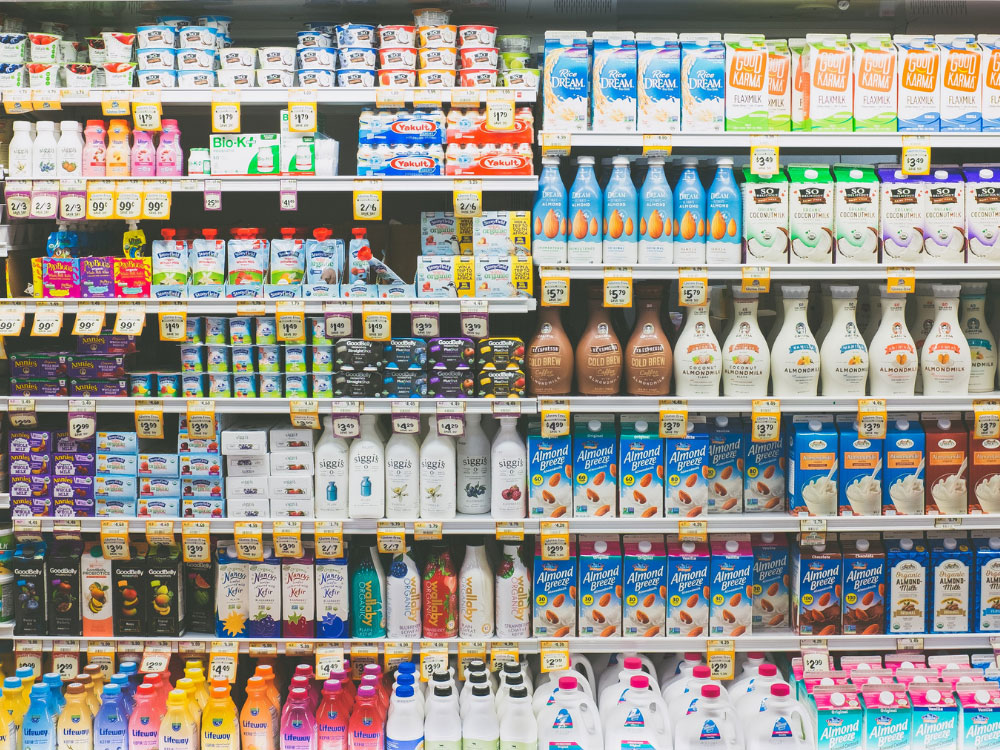For several months earlier this year, Grape-Nuts cereal was nowhere to be found. In the midst of the global COVID-19 pandemic, this should not have been national news. And yet, it was. Anything we want, whenever we want it, no matter what else might be happening – such are the expectations of the American consumer.
To meet them, the average U.S. grocery store offers a mind-boggling 40,000 items: In most parts of the country, we can buy a watermelon in January, find three flavors of dairy-free yogurt at midnight, and pick up a gluten-free loaf of bread to go with it.
But there’s a dark side to our endless choices: food waste. Since it’s impossible to perfectly match supply and demand, retailers ensure they never run out of anything by stocking more than they need—then taking the hit if food spoils, gets stale, or in reality, is even within several days of these fates. “You either over-order to optimize sales or you under-order, run out of products, and see sales suffer,” says Salar Salashoor, the chief marketing officer at Shelf Engine, a Seattle technology firm that offers supply chain and inventory management solutions. “If the choice is a little waste or an unhappy customer, which do you think a retailer will choose?”
The problem is all that waste adds up. According to ReFED’s Insight Engine, refining product management could eliminate 4.6 million tons of food waste, prevent 14.2 million tons of greenhouse gases, and generate $15.8 billion in net financial benefit annually.
The good news is a new generation of tech firms is working to eliminate that false choice between food waste and customer satisfaction. Using artificial intelligence and machine learning, they comb through data to discover patterns that a human store manager might not see. Maybe apple sales go up when there’s a promotion on cheese. Or maybe bread sales decline in early May when customers are dieting their way into their summer swimsuits. These insights allow retailers to better forecast what customers will buy and find new ways to sell perishable foods before they end up in the trash.
Each firm has its own strategy. Afresh Technologies sells itself as “moneyball for bananas,” a reference to the high-tech data analytics that transformed the game of baseball. The firm’s software specifically targets produce, a category that has been largely ignored by big tech because of its complexity. Unlike soda or cereal, managing produce requires tracking and understanding a slew of intersecting factors: Where the produce was grown, how far it traveled, where and how it was stored, local weather, promotions, and holidays.
Afresh aggregates distribution, inventory, and sales data for produce, then uses artificial intelligence software to seek out insights that allow produce managers to more precisely forecast sales and slash waste. According to the company, grocers using its software on average reduce food waste by 25 percent and increase operating margins in the produce aisle by 40 percent. Overall produce sales rise three percent, which sounds small but is impressive in an industry that traditionally sees between one and two percent sales growth annually.
Shelf Engine, in contrast, takes over ordering and inventory management for various categories, such as produce or dairy. Retailers only pay for what is sold, so Shelf Engine is incentivized to minimize spoilage and damage to earn its fee. It seems to be working: On average, according to Salashoor, Shelf Engine’s customers increase sales by 7% and improve their profits by 11%.
Still, even the most sophisticated software won’t be perfect. This is why it is equally important to develop alternative channels to sell surplus food. A good example is Copenhagen-based Too Good To Go’s app, which connects people in 15 countries, including the U.S., to restaurants and stores that have unsold food. Consumers don’t know what they will get, only that their “surprise bag” of food will cost about one-third of the regular retail price. Too Good To Go says it saves more than 100,000 meals every day. In January, it raised $31 million to fund its expansion.
These companies offer hope. But I believe that defeating food waste also requires us all to change. The first step: asking ourselves if we really need so many choices?
Recent trends suggest the answer is no. Take the yogurt industry. For more than a decade, sales soared as consumers fell in love with new offerings: organic, Greek, plant-based, and low-sugar. But at a certain point, it all became too much. By 2019, the average grocery store offered more than 300 kinds of yogurt! Making a choice became overwhelming, and sales slipped.
For many retailers, the pandemic put a spotlight on the benefits of fewer options. Last summer, according to the Wall Street Journal, the average number of items sold in grocery stores fell 7.3 percent, as grocers struggled to keep products in stock. Some executives said they plan to stick with fewer choices, even after life returns to normal. “We may not need 40 different choices of toilet paper,” the chief executive at IGA, a chain of independent grocery stores, told the newspaper.
Or bread. Or cheese. Or cereal, even if that means that Grape-Nuts may be temporarily out of stock. If we, as a culture, can be satisfied with fewer options—and forgive retailers for running out of things now and then—businesses might be emboldened to change the way they work. And waste far less food along the way.
**This article is available for reprint. Please contact Jeff Costantino at [email protected] for more information.**

